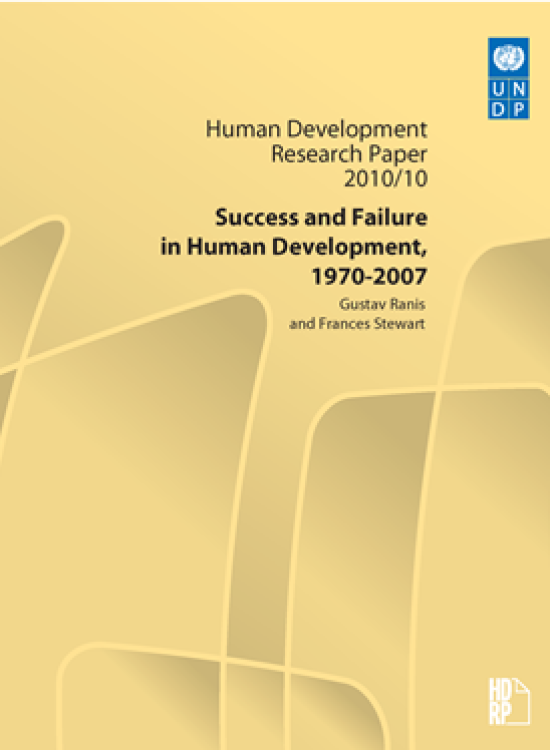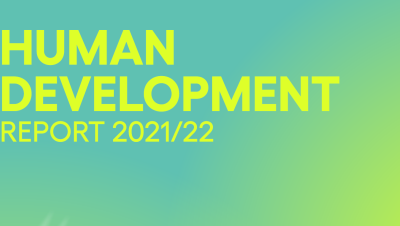Success and Failure in Human Development, 1970-2007

Download Report by Language
Document
hdrp201010.pdf
(878.03 KB)
Citation
Ranis, Gustav, Stewart, Frances. 2010. Success and Failure in Human Development, 1970-2007. New York.
Success and Failure in Human Development, 1970-2007
Posted on: January 01, 2010
The paper reviews experience in advancing Human Development since 1970 by investigating behaviour among countries that made the largest improvements in HD, and those that made the least improvement. The three developing countries with the fastest growth in the HDI over the period are selected from initial low-HDI, middle HDI- and high HDI country groupings, and their experience compared on a range of indicators. Certain characteristics were common to all success cases: good or moderate educational enrolment ratios; good or moderate female/male enrolment ratios; and good or moderate Human Poverty Indices. The other three major inputs into success appear to be growth, social expenditure and income distribution, and the successful countries showed different combinations of performance on these. Weak performers all experienced poor or moderate economic growth. Two classes of weak performance were: low income countries with weak growth, poor distribution and high poverty; and transition countries where economic, institutional and demographic disruptions led to poor progress. We also look beyond the HDI as an indicator of HD, explore such other features as political freedoms, security and environmental sustainability, and find little correlation between achievements on these indicators (both in levels and changes) with success and failure with respect to the HDI. Finally we provide short country vignettes of some of the success and failure cases, exploring some historical and institutional features associated with their performance.

